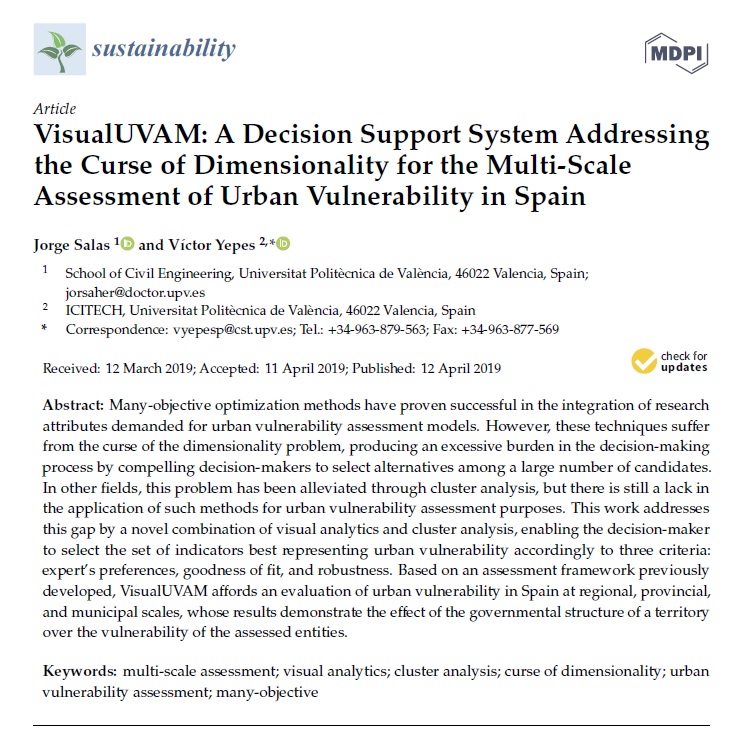 Nos acaban de publicar en la revista Sustainaibility (segundo cuartil en Web of Science) un artículo donde se explica una nueva metodología, VisualUVAM, que sirve de apoyo en la toma de decisiones relacionada con la vulnerabilidad urbana. Esta herramienta se ha aplicado a nivel regional, provincial y municipal en España. Complementa los artículos y estudios previos realizados por nuestro grupo de investigación en el marco del proyecto de investigación DIMALIFE, plasmados en la tesis doctoral de Jorge Salas, de la que ya comentamos algo en un artículo anterior.
Nos acaban de publicar en la revista Sustainaibility (segundo cuartil en Web of Science) un artículo donde se explica una nueva metodología, VisualUVAM, que sirve de apoyo en la toma de decisiones relacionada con la vulnerabilidad urbana. Esta herramienta se ha aplicado a nivel regional, provincial y municipal en España. Complementa los artículos y estudios previos realizados por nuestro grupo de investigación en el marco del proyecto de investigación DIMALIFE, plasmados en la tesis doctoral de Jorge Salas, de la que ya comentamos algo en un artículo anterior.
Como se trata de una publicación en abierto, os dejo a continuación el artículo completo para su descarga.
Referencia:
SALAS, J.; YEPES, V. (2019). VisualUVAM: A Decision Support System Addressing the Curse of Dimensionality for the Multi-Scale Assessment of Urban Vulnerability in Spain. Sustainability, 11(8), 2191. doi:10.3390/su11082191

